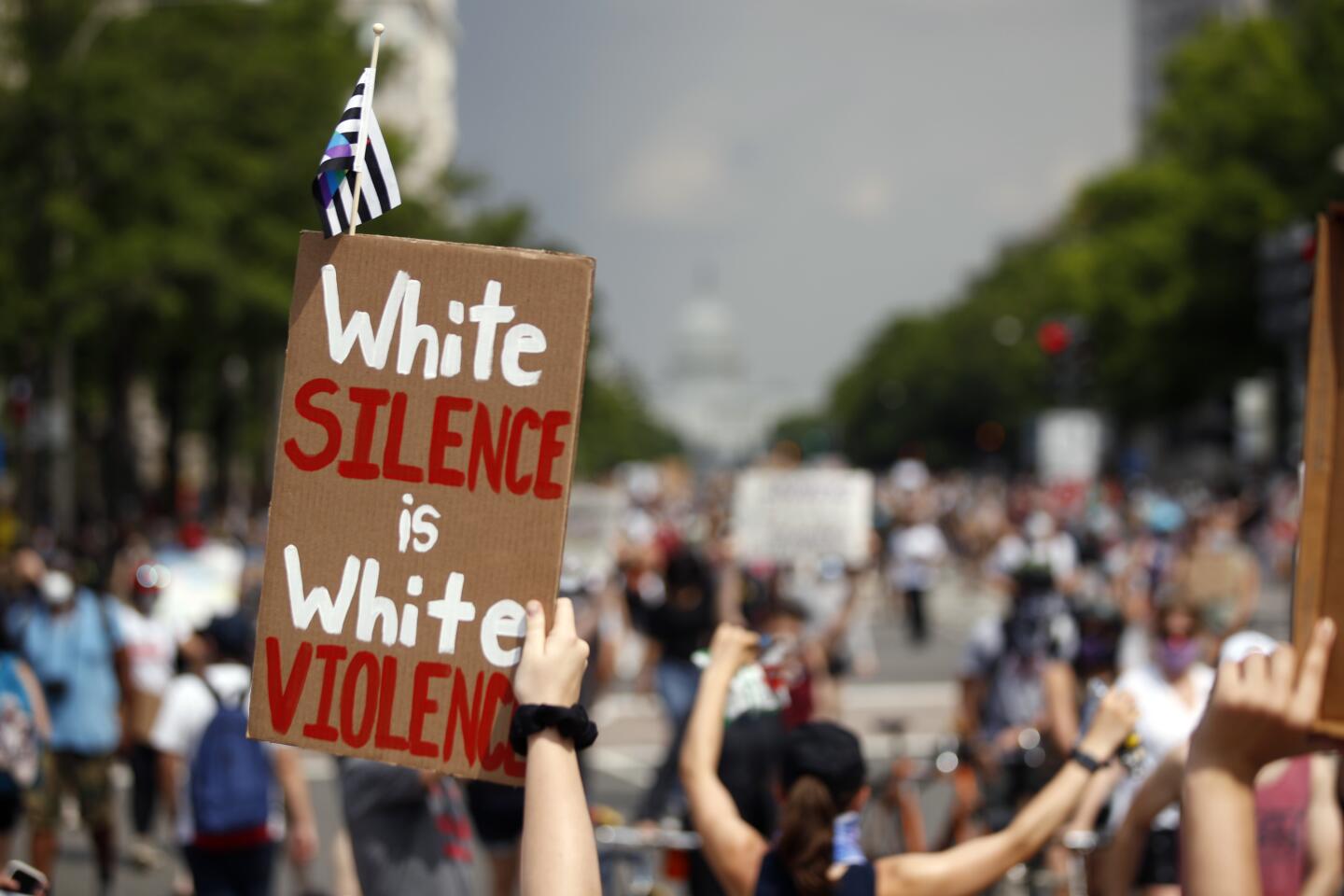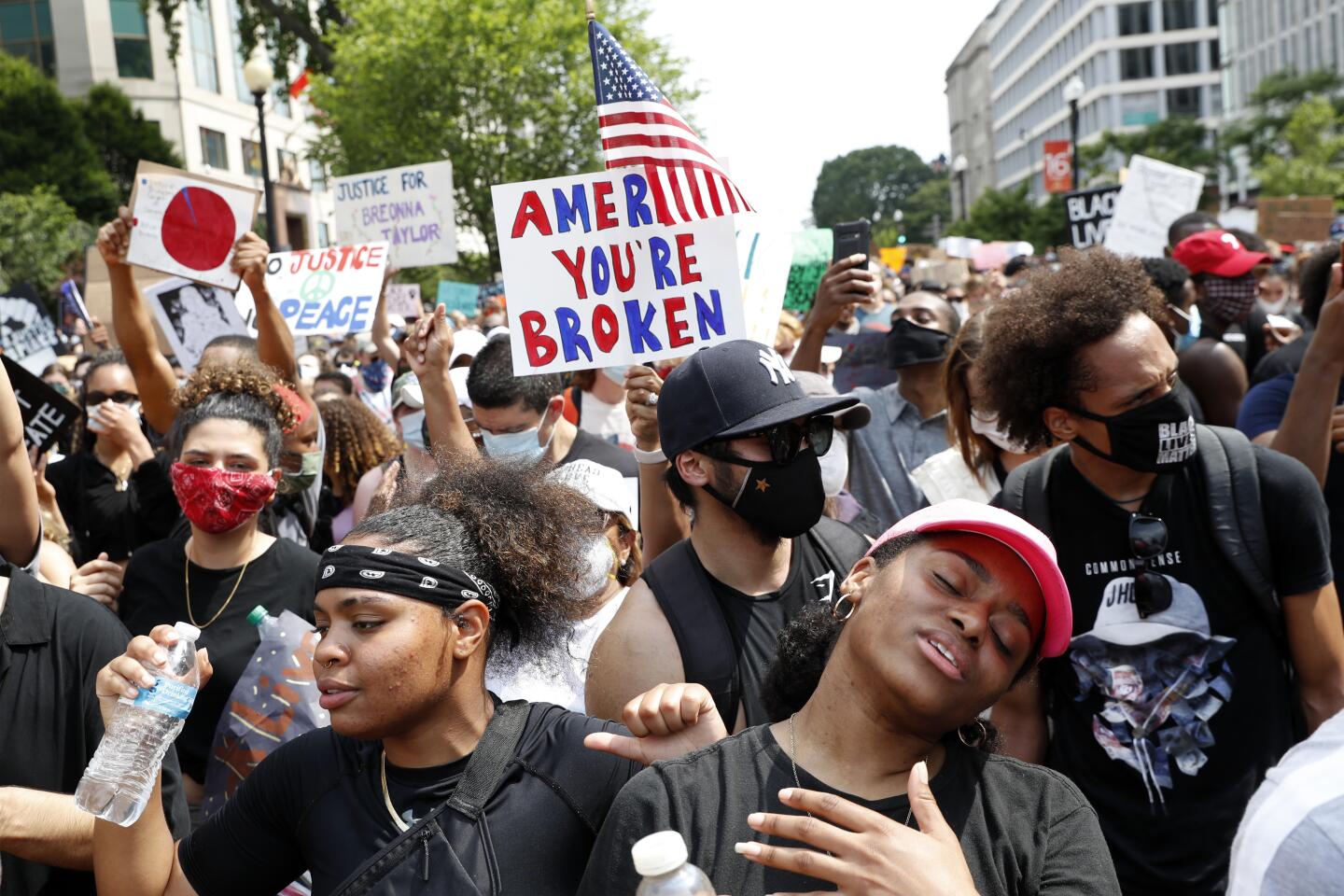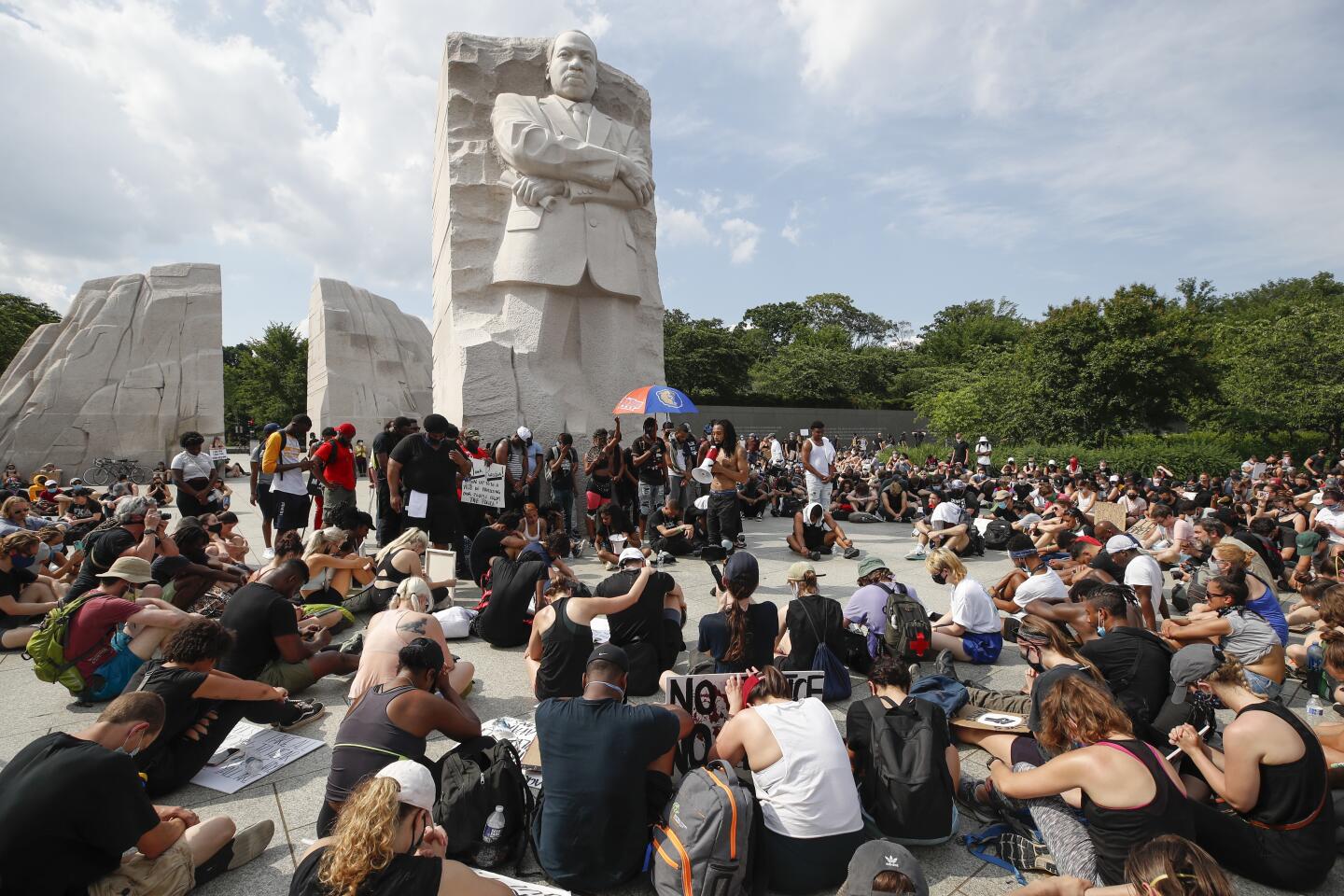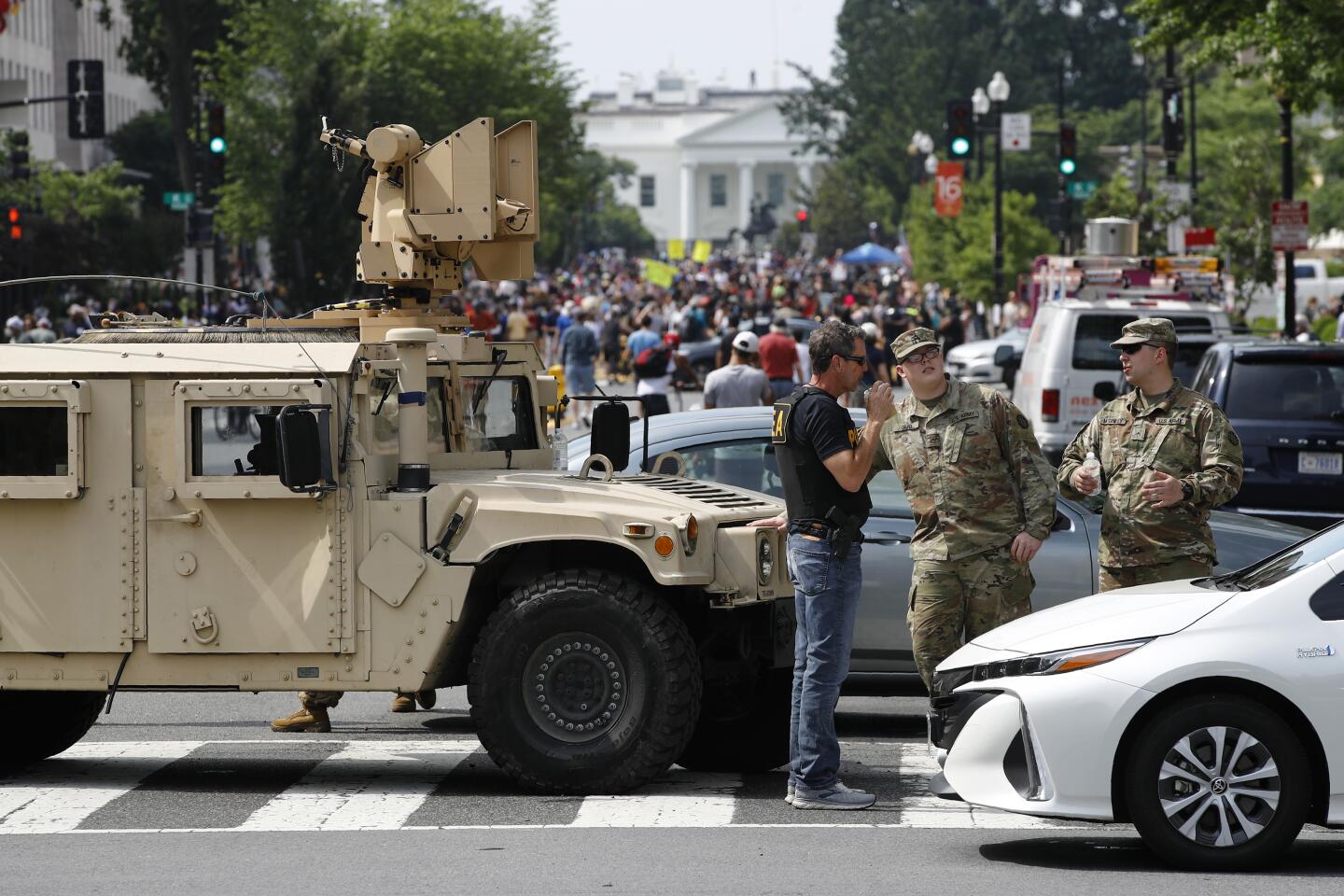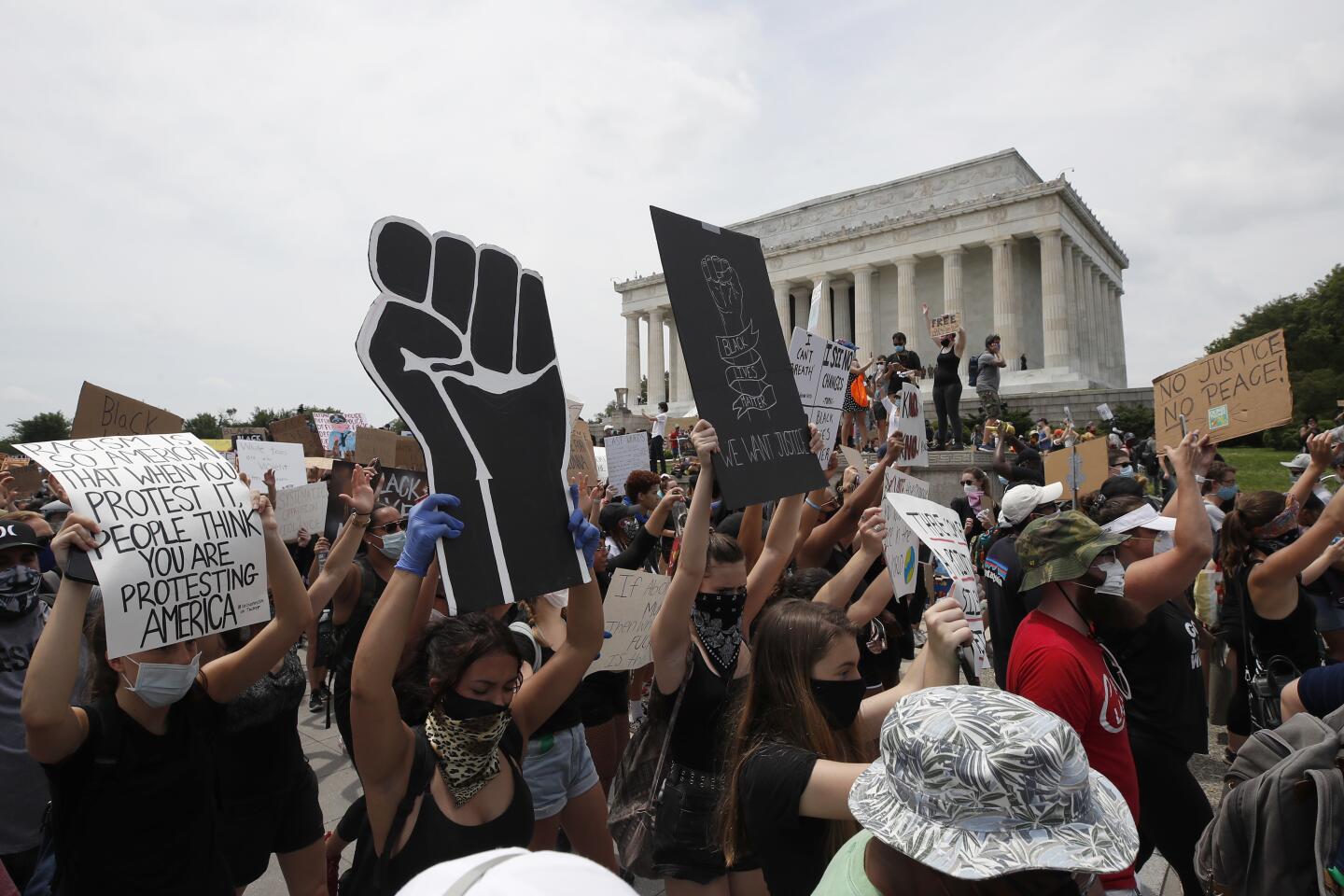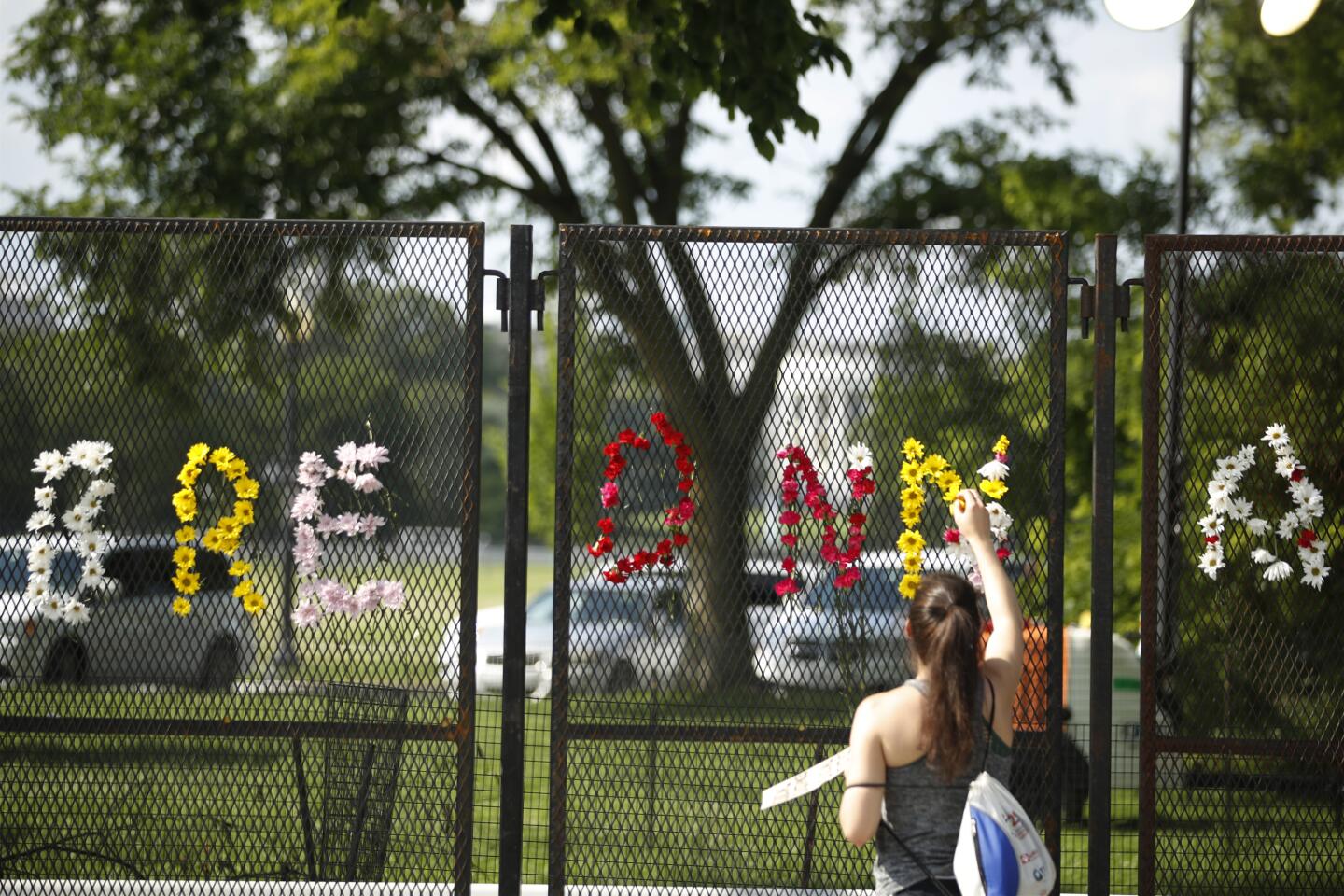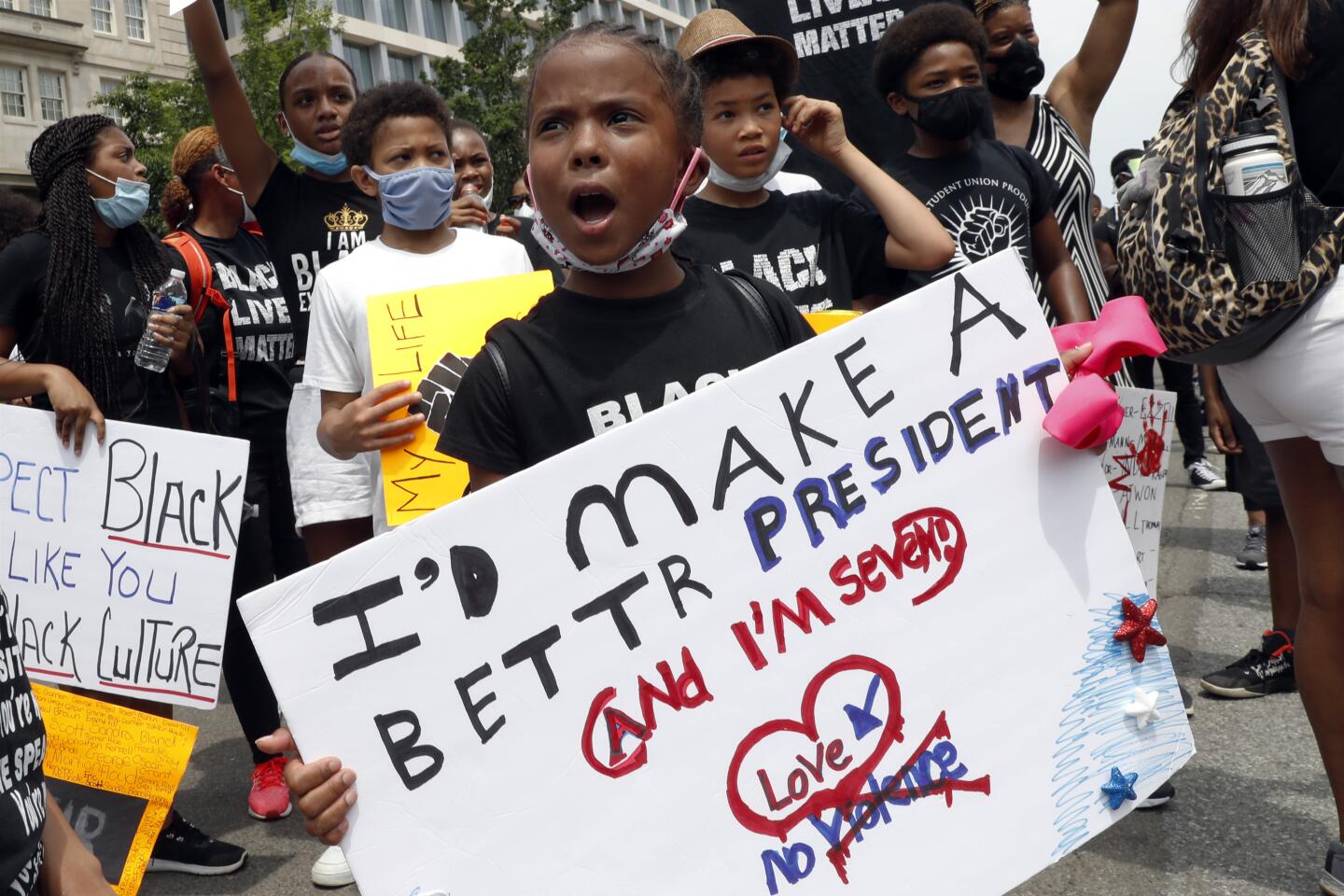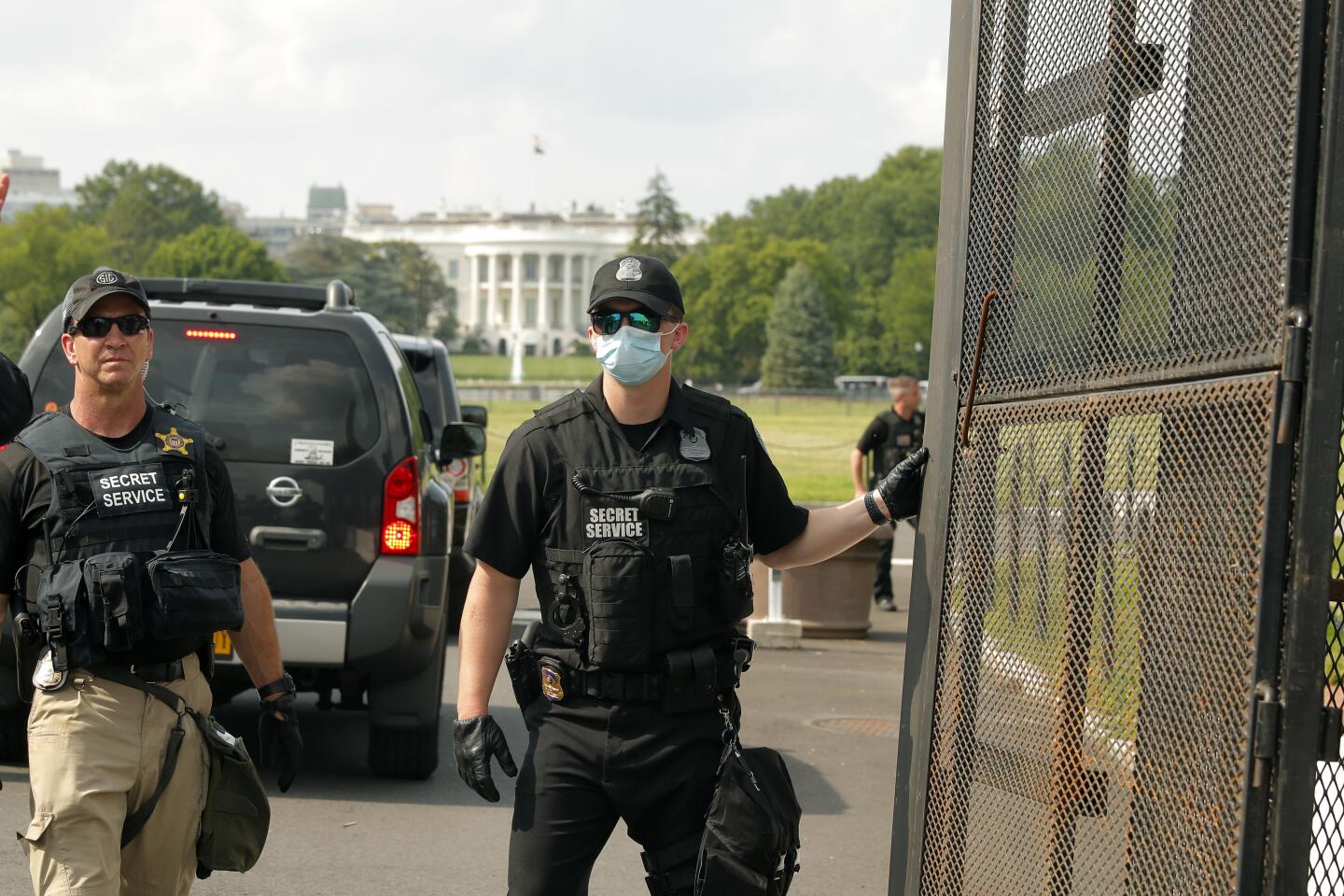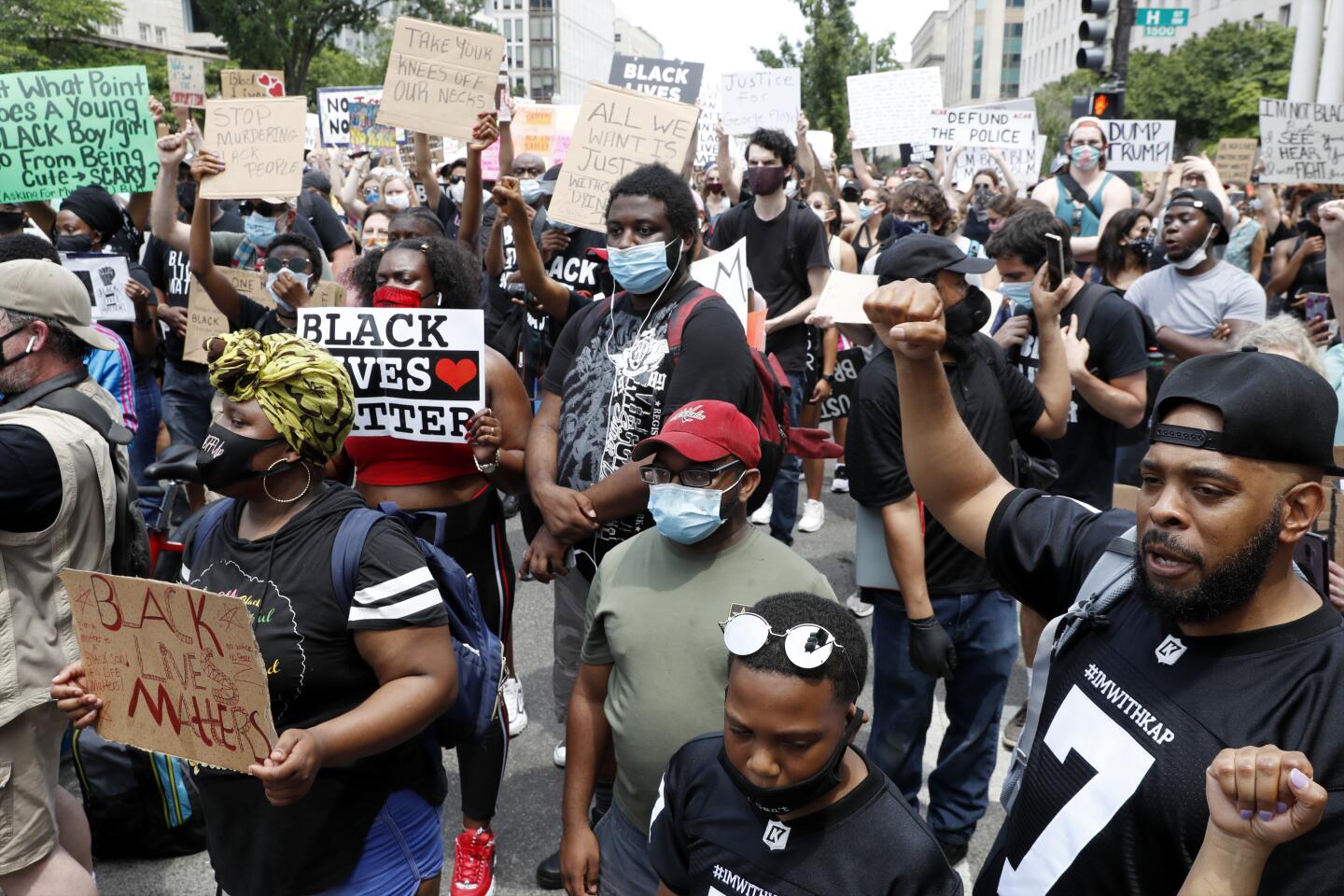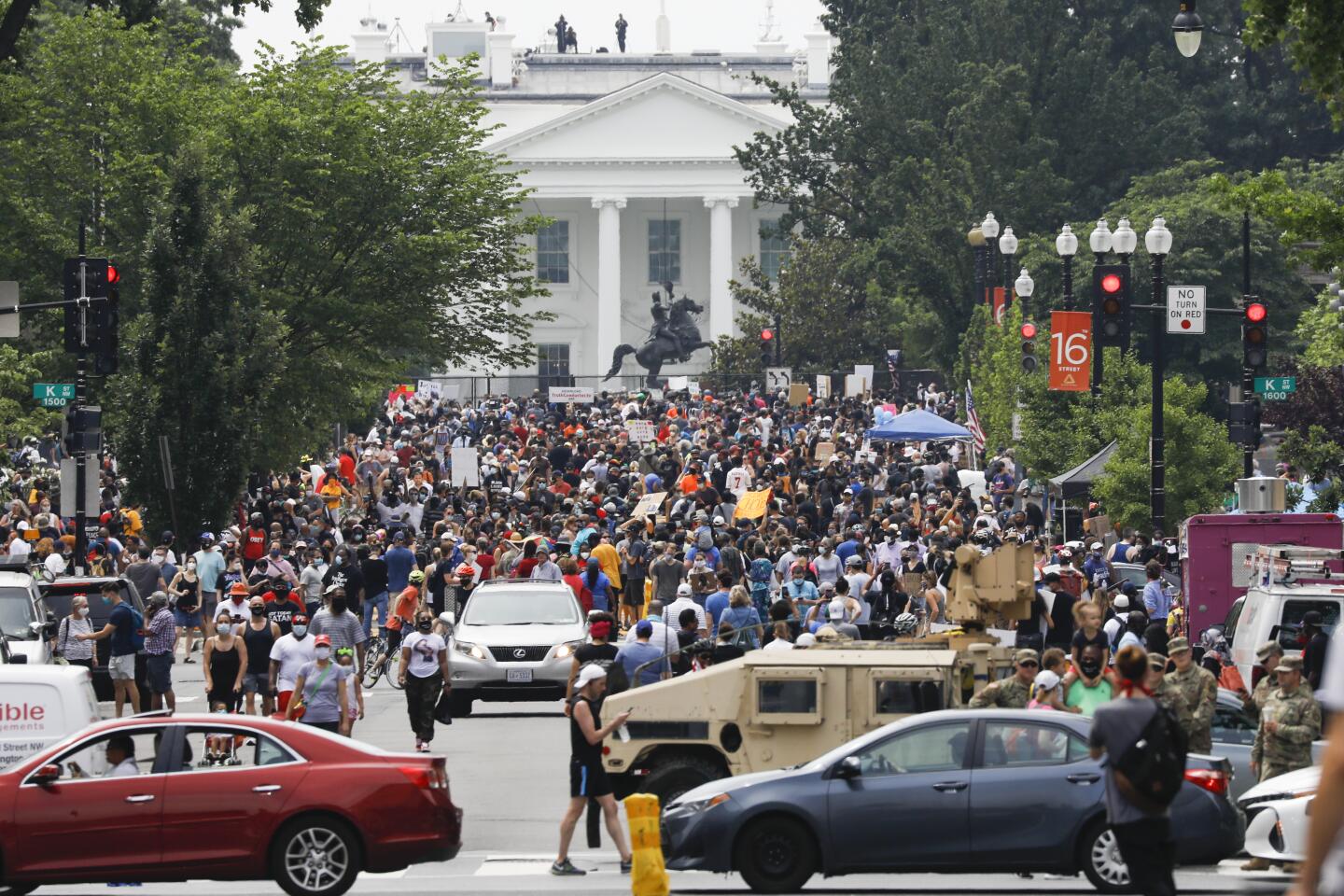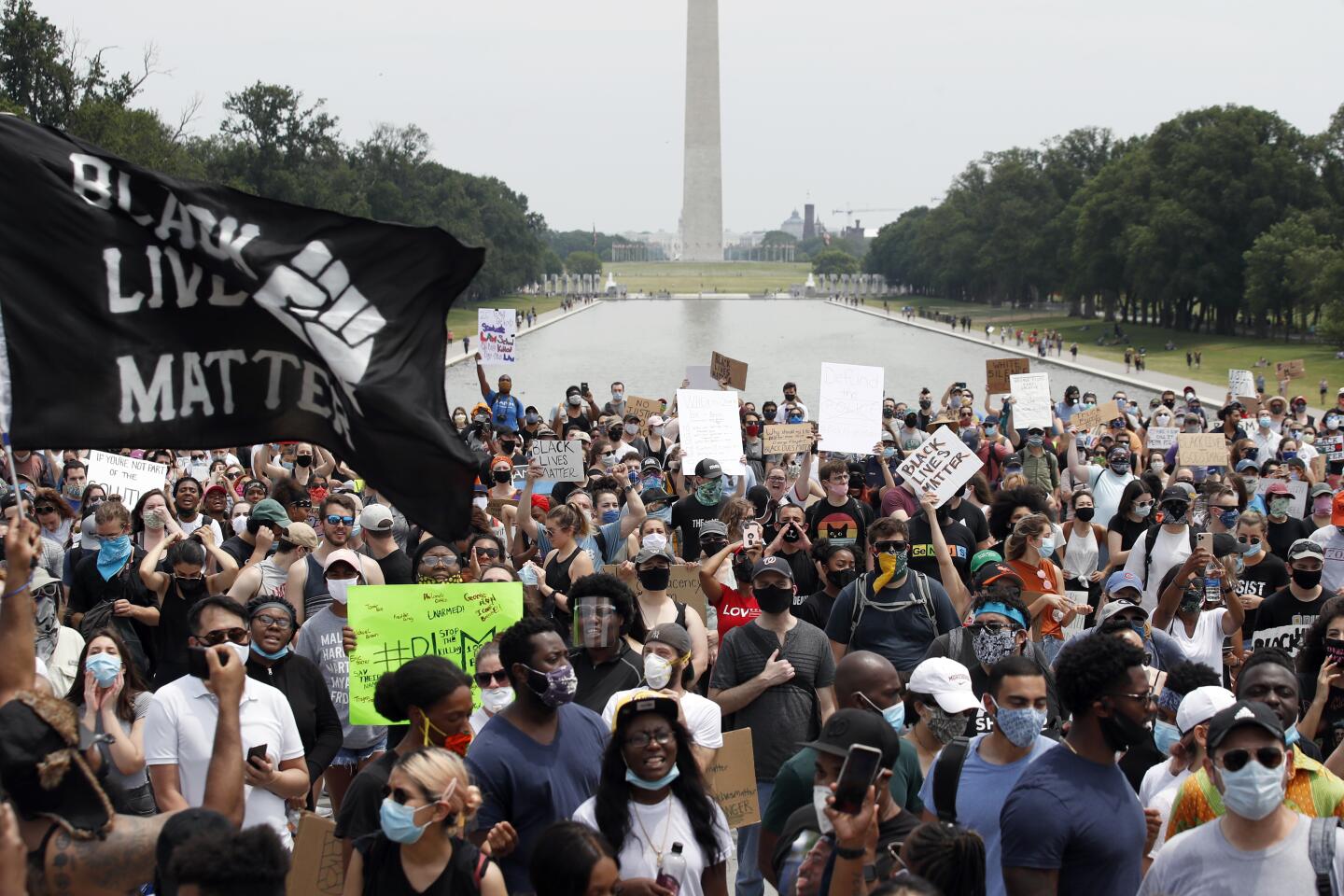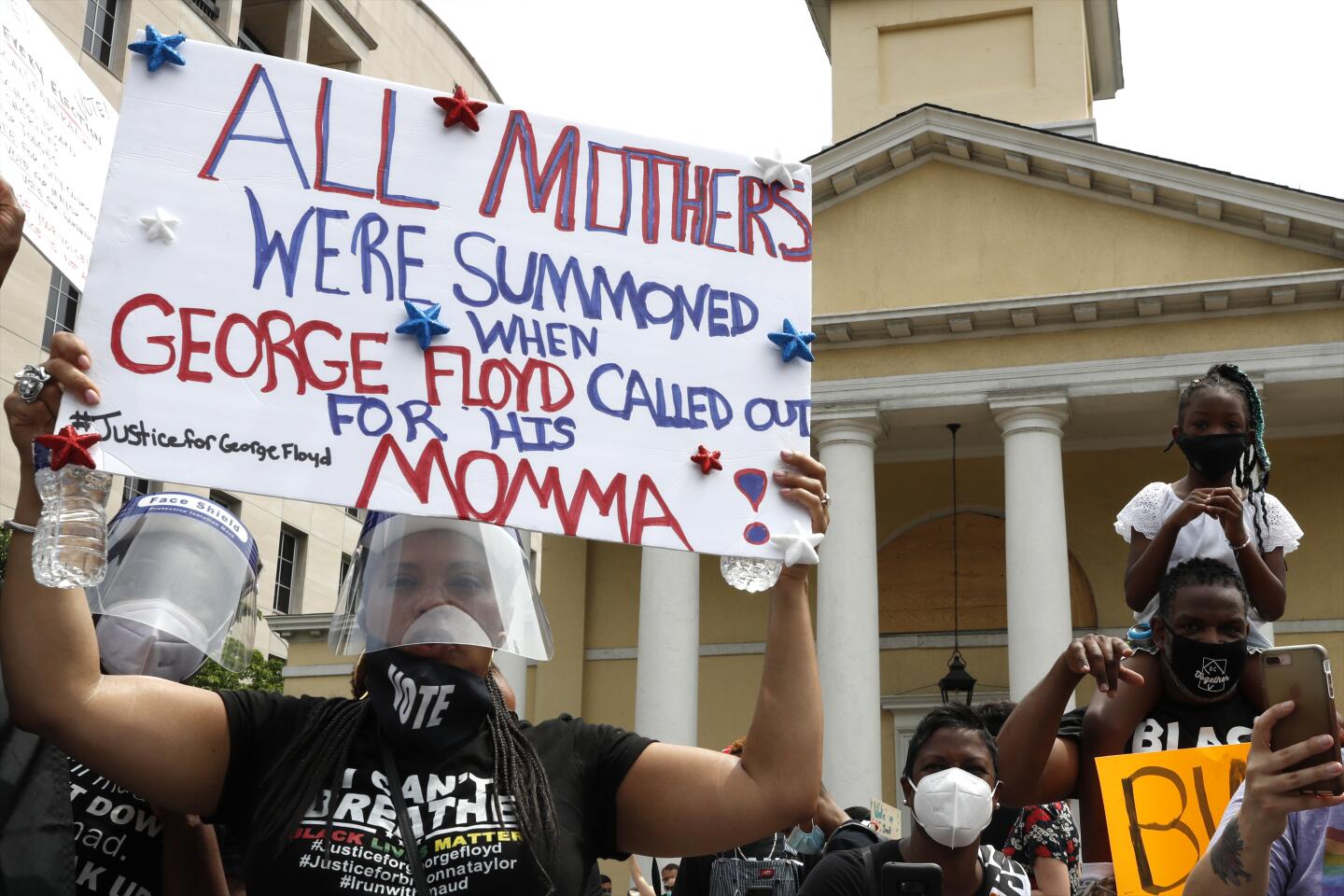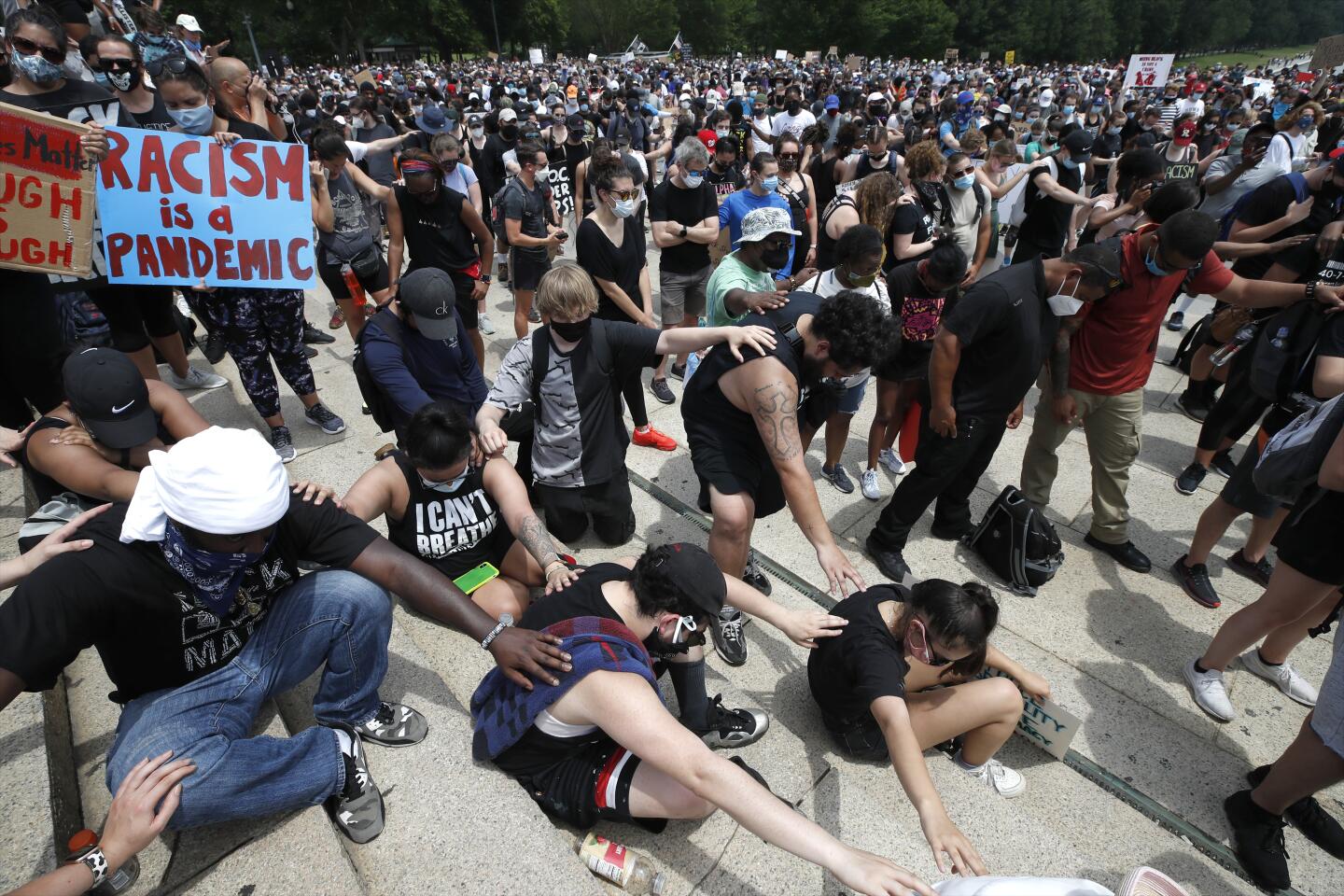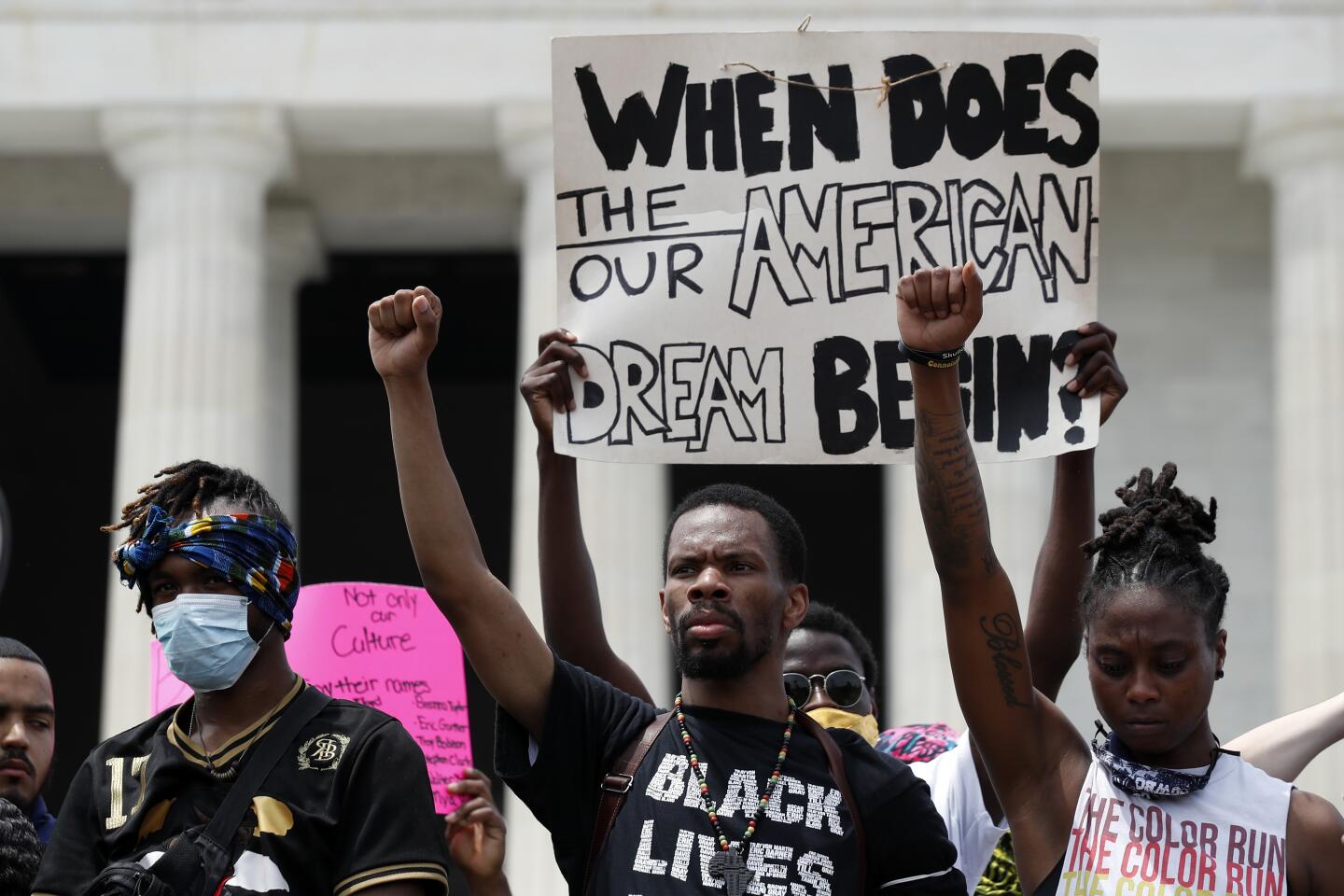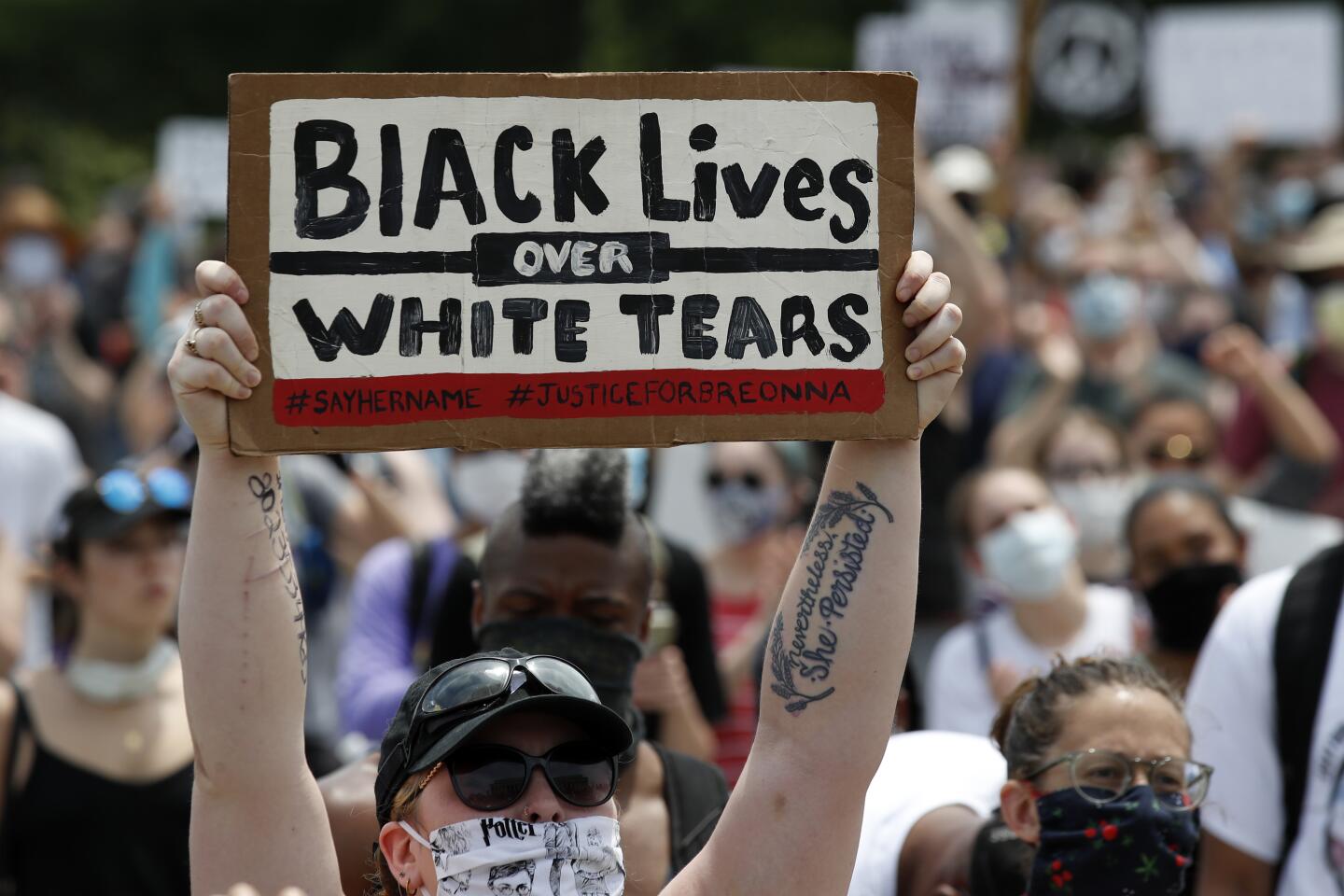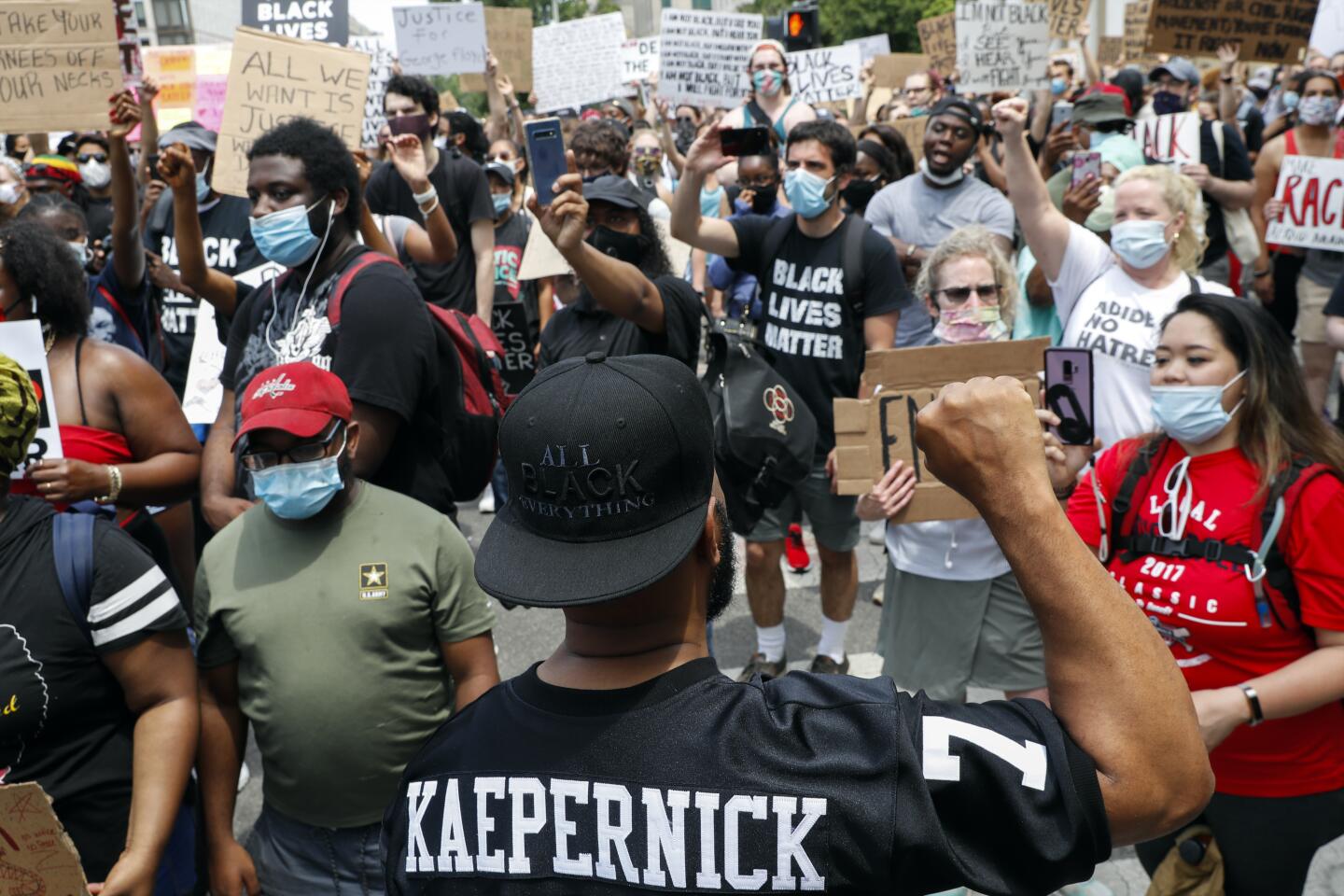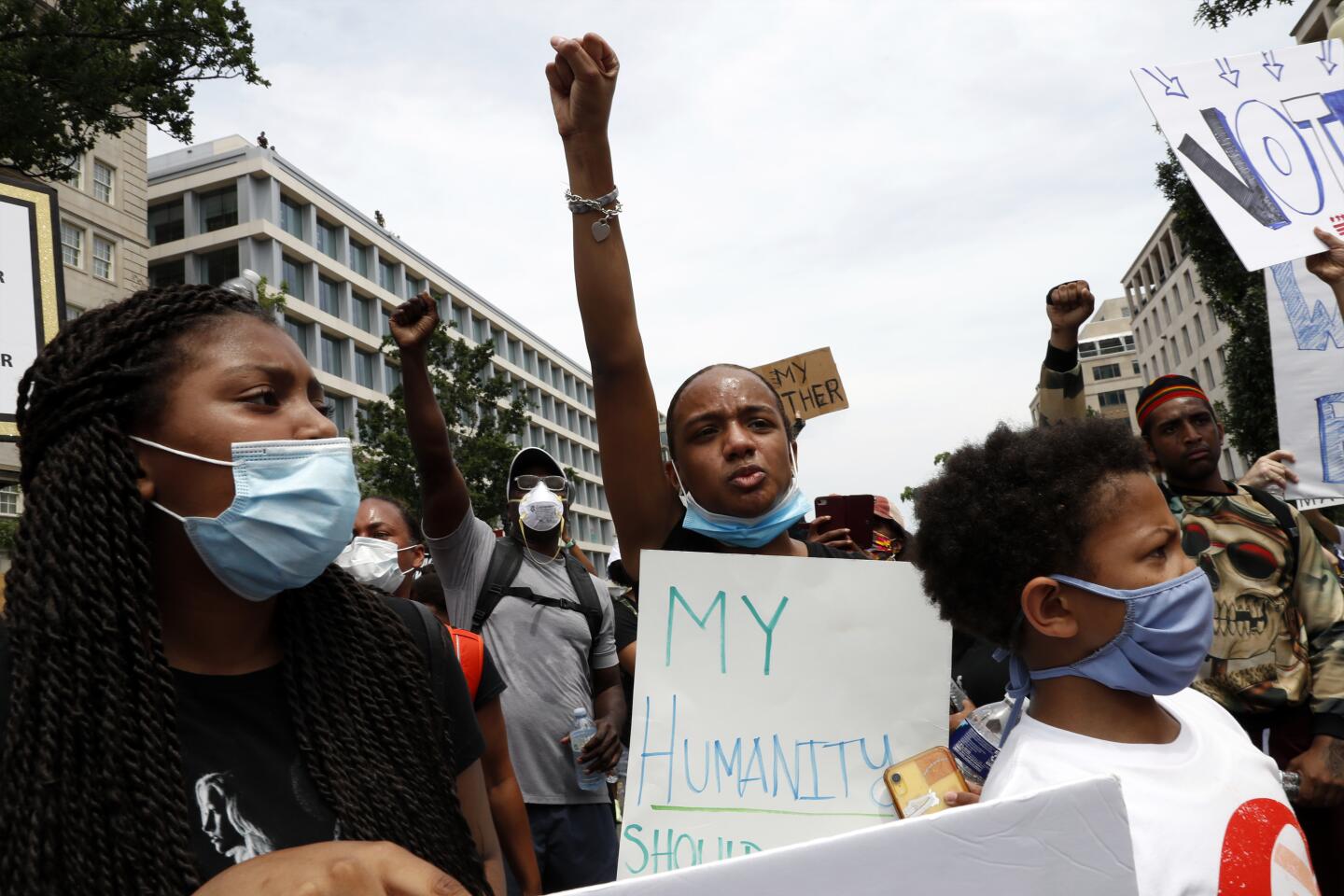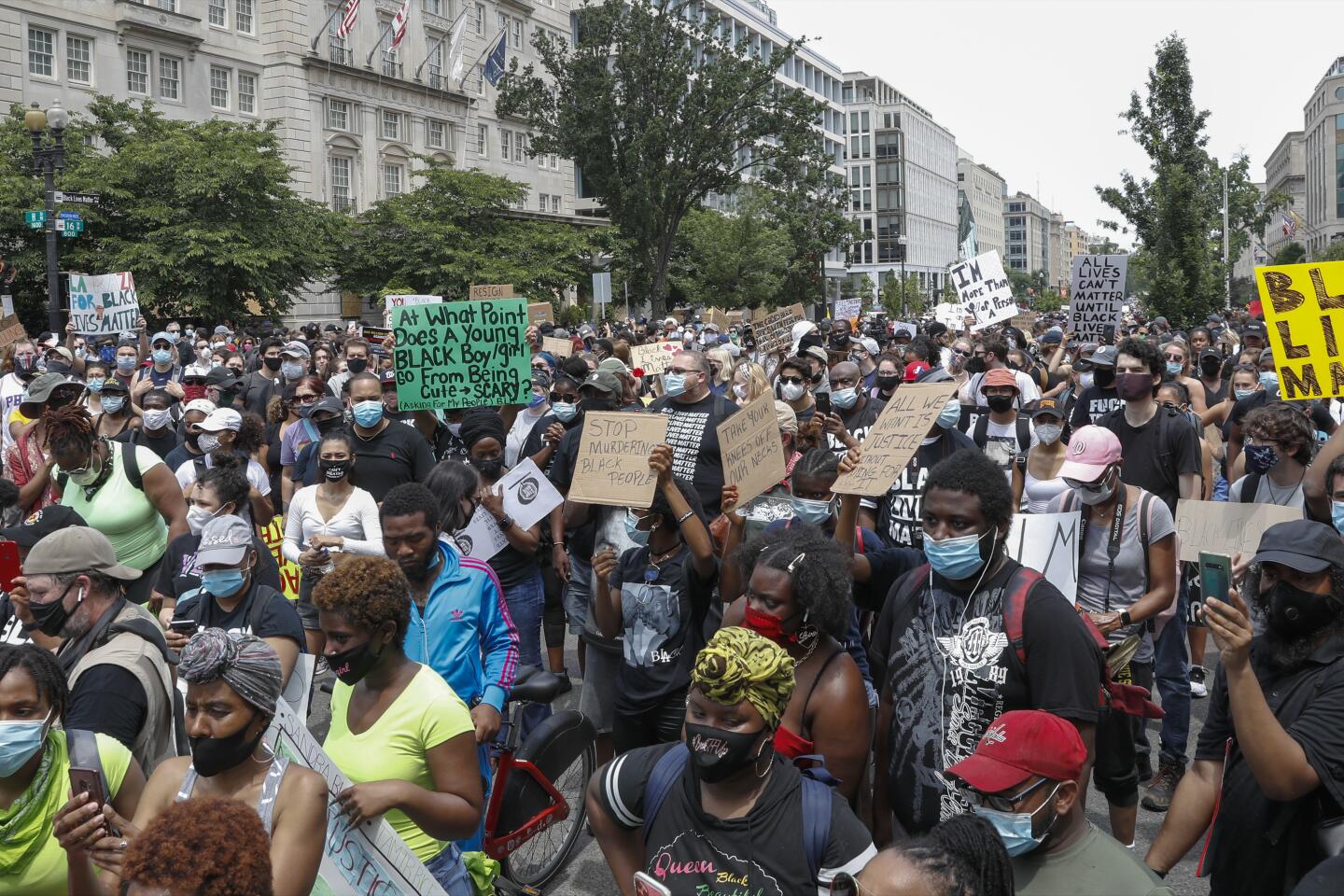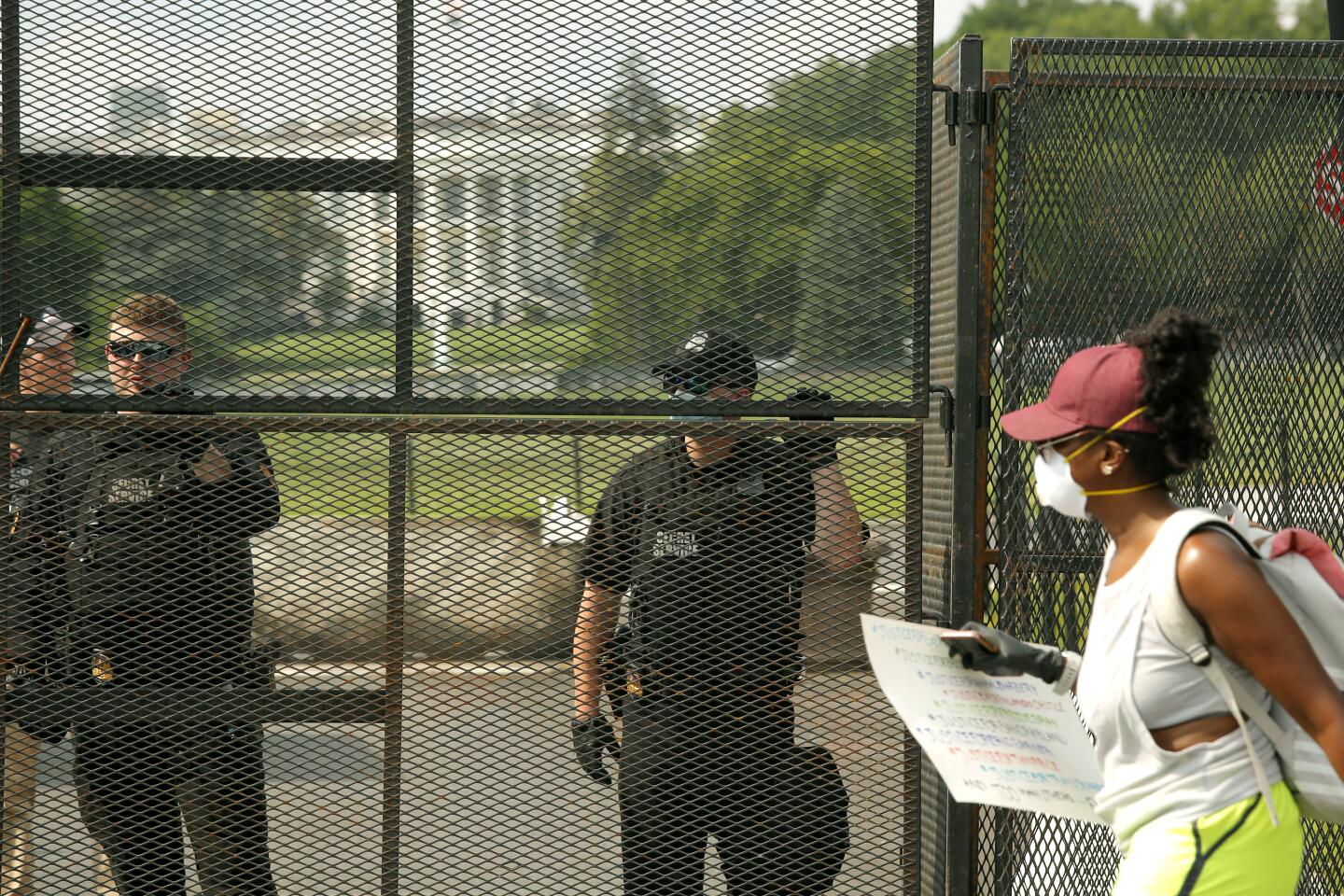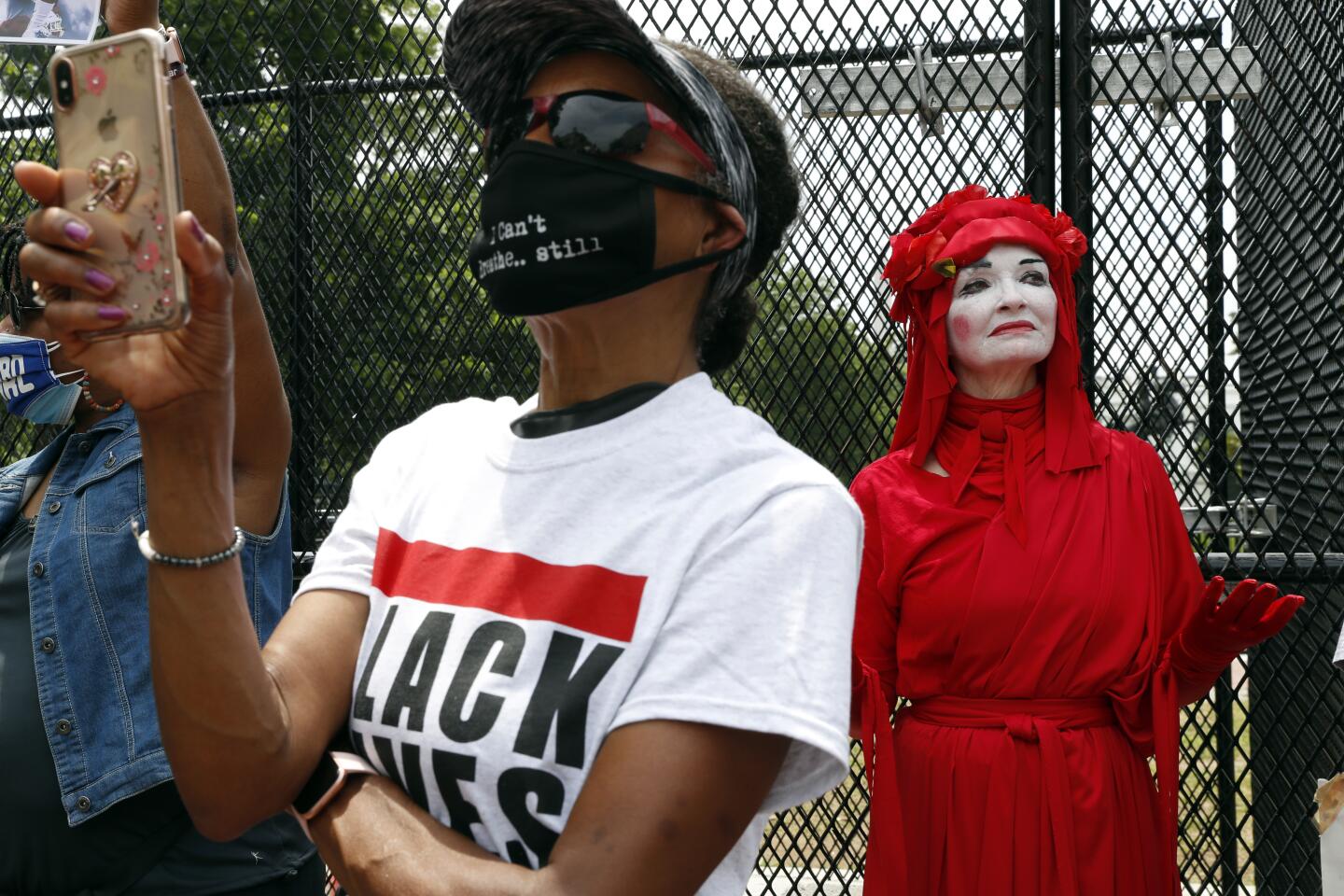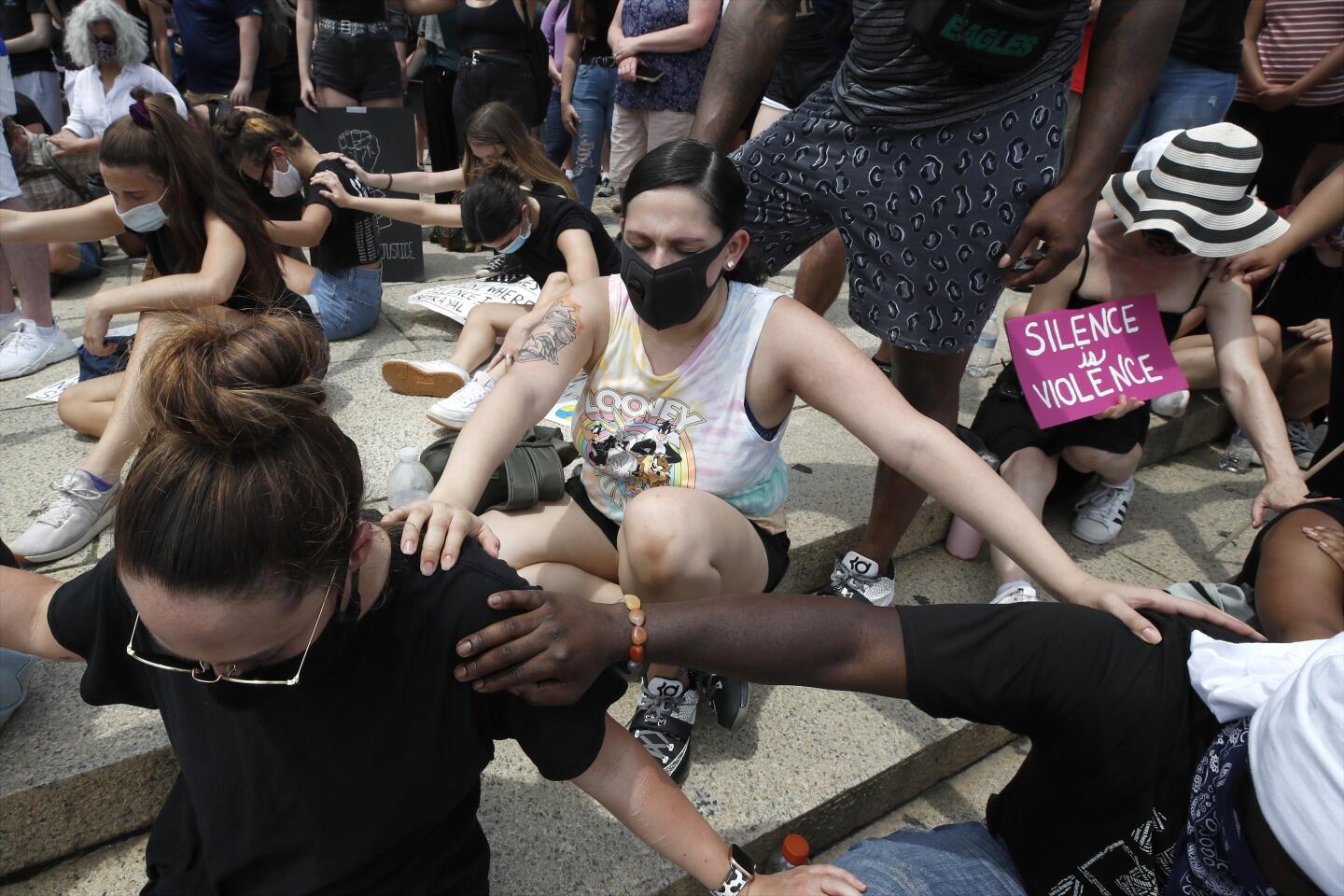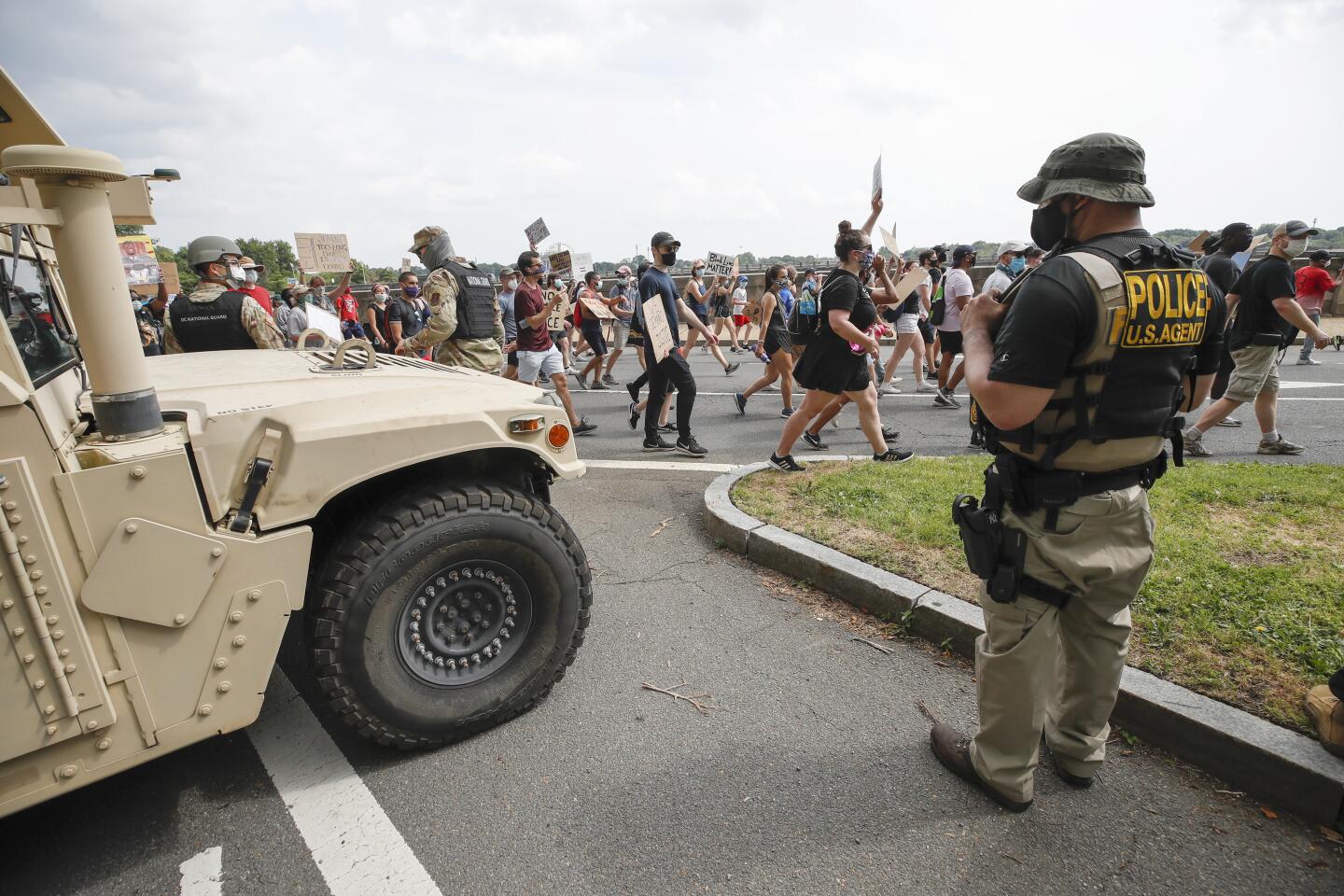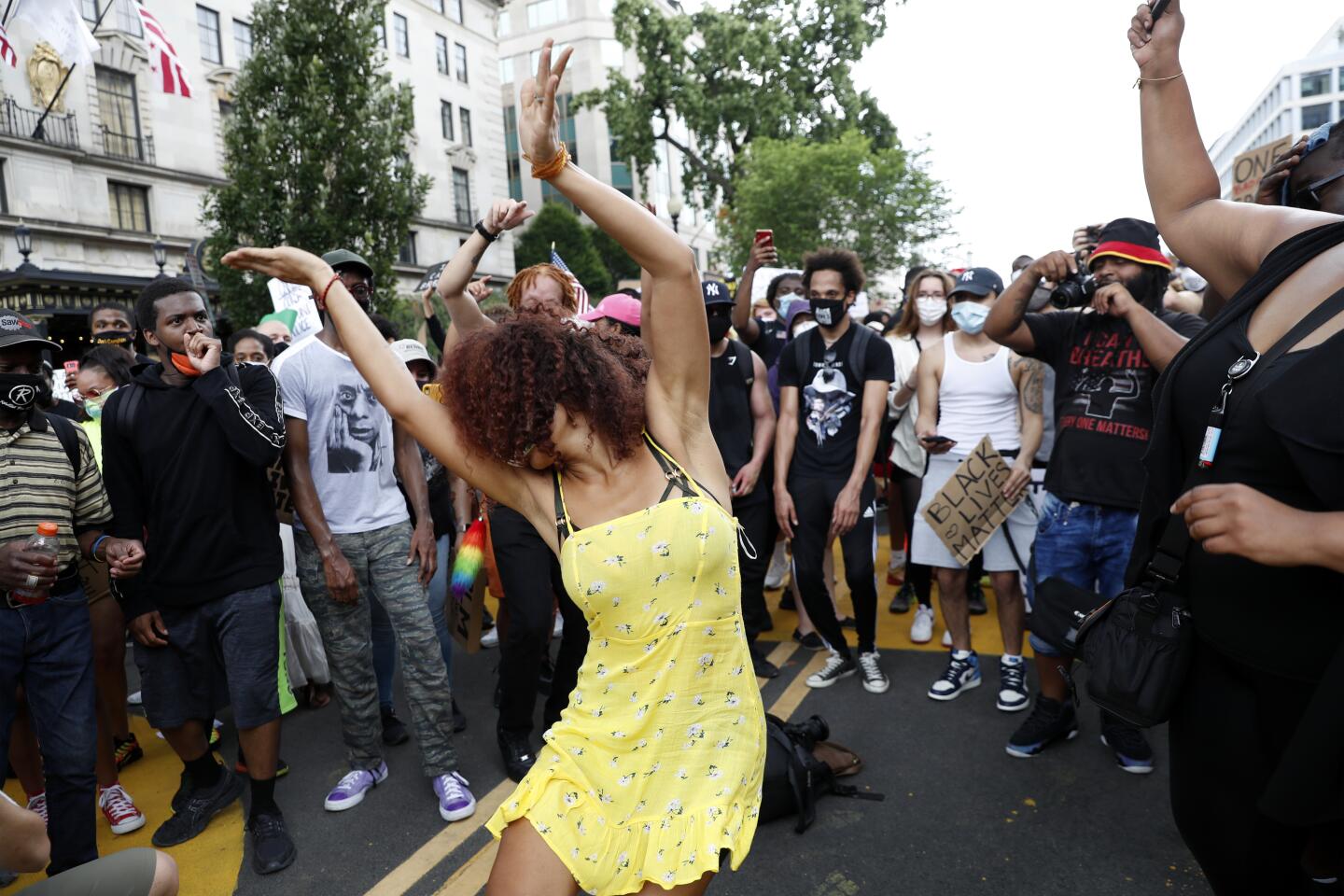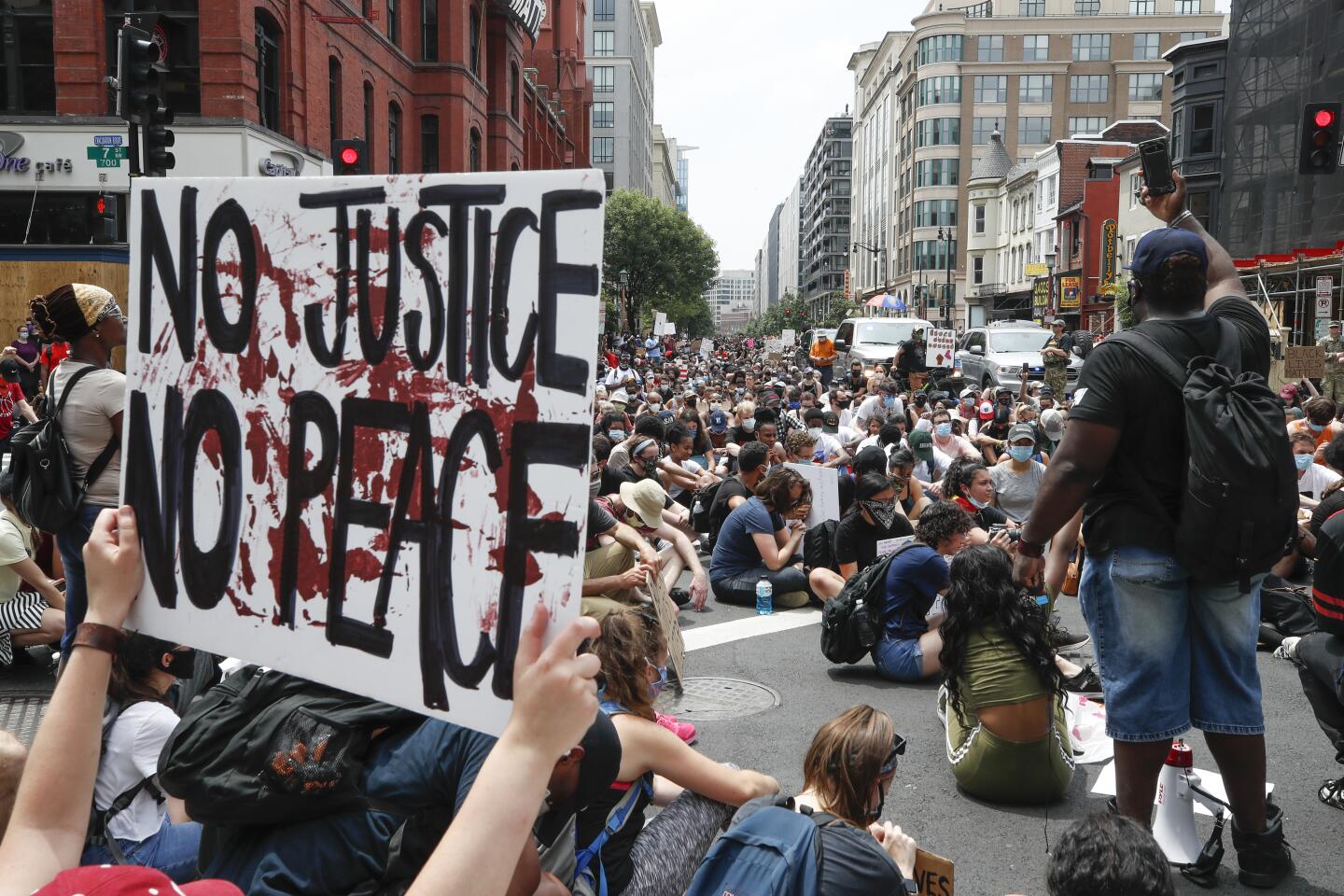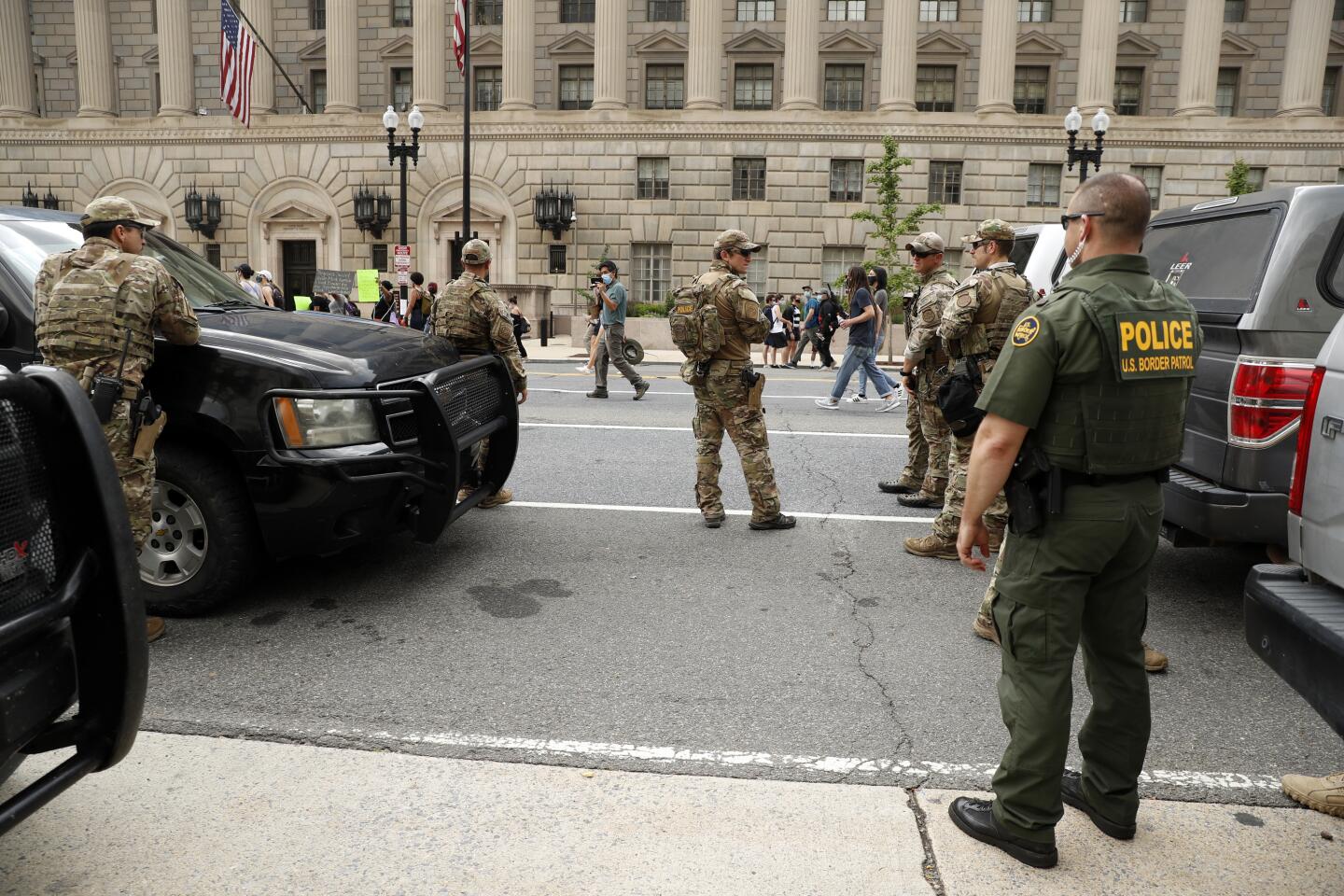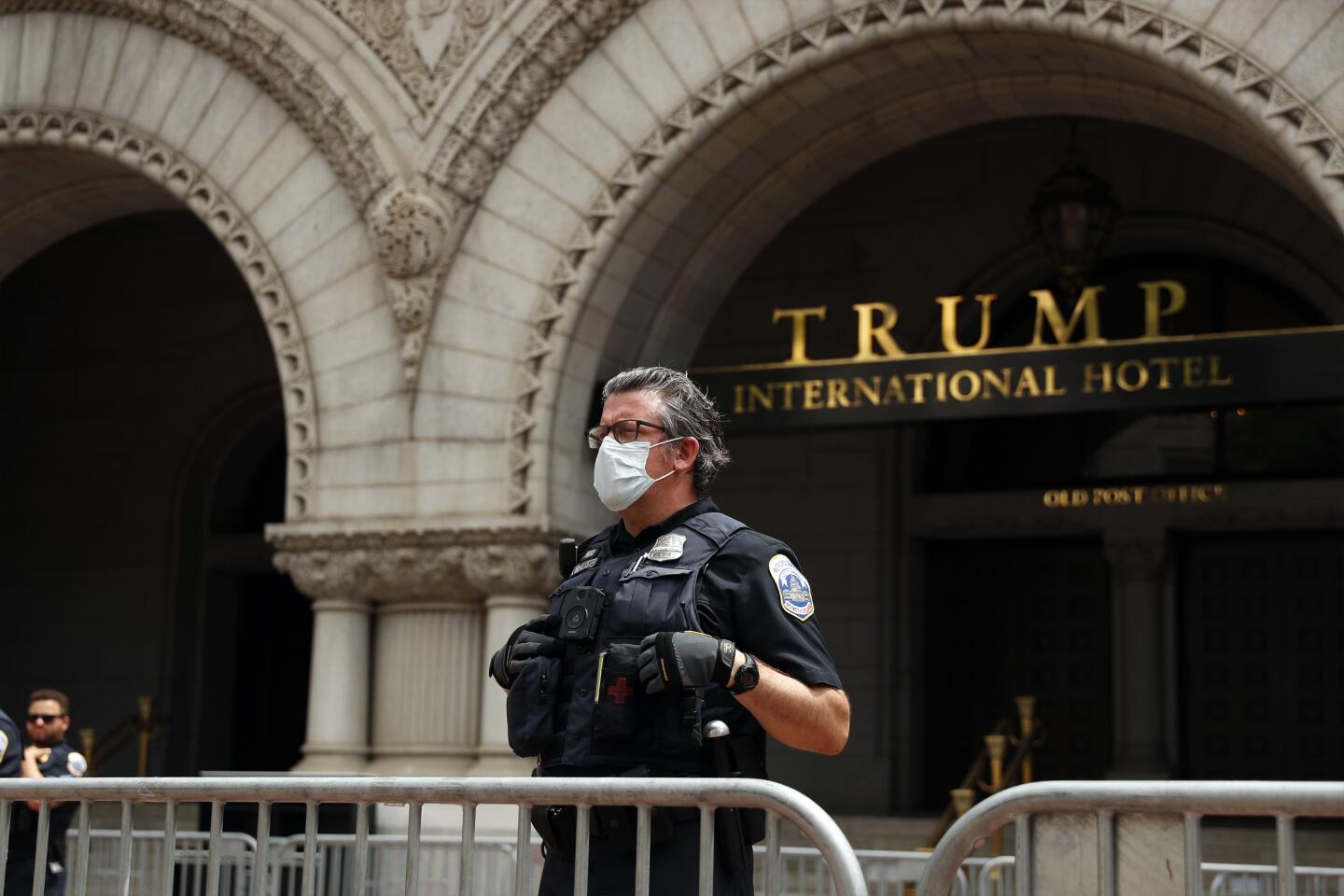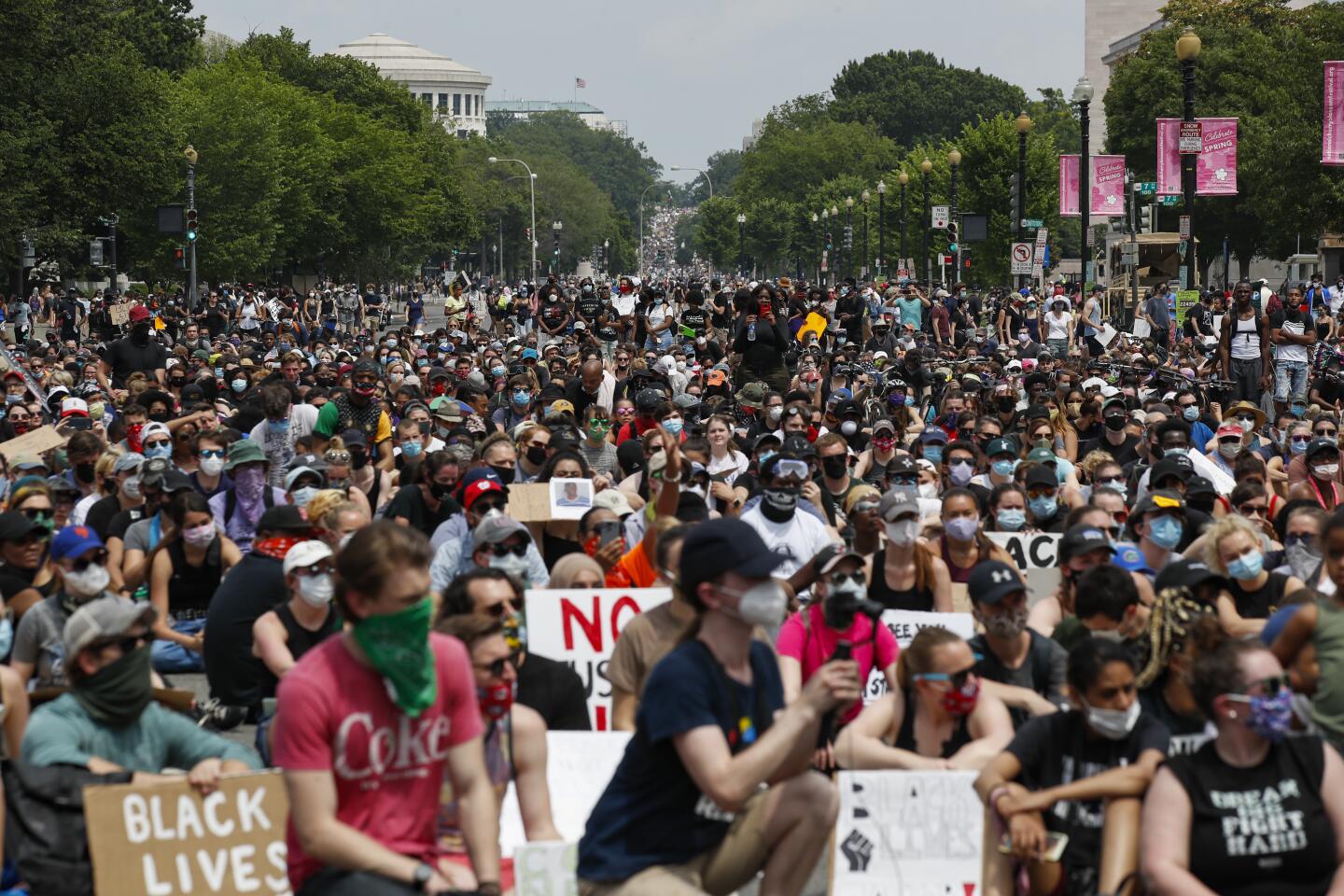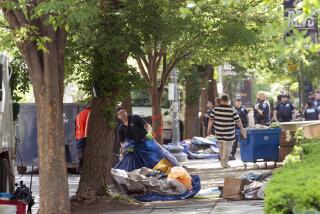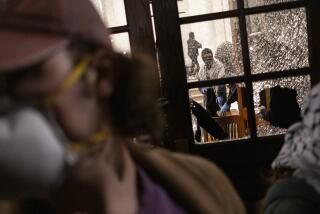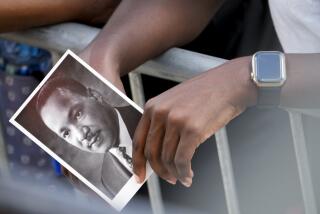Massive protests fill Washington to decry killing of George Floyd
At times, it seemed almost all of the nationâs capital came out to protest racism and police brutality on Saturday.
Tens of thousands of people converged on the newly â and officially â named Black Lives Matter Plaza smack dab in front of the White House, which now resembles a fortress surrounded by high fences and concrete barriers, to decry the police killing of George Floyd in Minneapolis.
Black power activists came, along with women from the YWCA. Army vets and union recruiters. Heavily tattooed people and women in hijabs. Children and gray-haired grandmothers. Federal workers, priests, doctors in scrubs, people with Bibles who seemed familiar enough with the book to know how to hold it.
Unlike earlier this week, there was minimal police presence and no reports of violence or vandalism. The mood was serious and passionate but also peaceful and friendly.
And the mayor was there.
âYou know we have to speak up loudly for more justice and more peace!â Mayor Muriel Bowser called out to the crowd.
Few American cities have embraced the demonstrations over the police killing of Floyd, and of the heavy-handed federal response, as enthusiastically as the District of Columbia. And that has led to a battle between Bowser and the occupant of the besieged White House, President Trump.
At Bowserâs order, district public works crews on Friday painted âBlack Lives Matterâ in huge neon-yellow letters, stretching from curb to curb and down two full city blocks on 16th Street, which leads directly to the White House. Trump snapped back on Twitter, calling her âincompetent.â
City officials expected Saturdayâs demonstrations, which also took place in nearby Maryland and Virginia suburbs, to be the largest so far. Rallies resumed for the ninth consecutive day across the country.
âThe silent majority cannot be silent anymore,â said Eileen Suffian, a 64-year-old accountant who attended the Washington rally with her rescue dog Moxie. âWhere there is justice somewhere, there is justice everywhere.â
As part of the age group considered more vulnerable to the coronavirus, Suffian said she spent weeks trying to avoid crowds. But after federal officials used riot police and National Guard troops, chemical gas and low-flying military helicopters to scatter peaceful protesters near the White House on Monday, she said she had to act.
âThe government mobilizing the Army against its own citizens â I never thought iâd live to see that,â she said.
Noel Rubio, 24, the son of immigrants from the Philippines, said the causes of civil rights and LGBTQ equality have benefited from black activism, and it was time to return the support.
âWe are standing up for our black brothers and sisters to say, Enough is enough,â said Rubio, who works in Washington as a consultant.
Unlike most of the carefully choreographed marches and rallies that often occur in Washington, the anti-racism protest Saturday appeared a grass-roots effort with no single organizer or group in charge. It was broadly dispersed, with parades of people hoisting signs, wearing masks and chanting cries for justice as they crisscrossed the city in sweltering heat.
With much of the downtown closed to traffic, crowds stretched about a mile up 16th Street from the White House, and for about two miles from Capitol Hill to the White House. Demonstrators also crowded the grassy National Mall, massing in front of the Lincoln Memorial and other monuments.
Some protesters stopped to take a knee. Others held up their hands and chanted, âDonât shoot!â Almost to a person, they carried signs, as well as masks, proclaiming, âI canât breatheâ or âBlack futures matter.â
In some spots music blared from speakers; elsewhere, there were competitions of megaphones broadcasting speeches.
Along the many routes, in the intense heat and humidity, churches and individual groups offered free bottles of water, lunches and squirts of hand sanitizer to the demonstrators.
Several protesters credited Bowser for having stepped in after the Monday crackdown, when protesters were violently cleared so that Trump could make his way to St. Johnâs Episcopal Church for a photo op. Since then, several protesters said, the atmosphere has shifted from a military-occupied city to something closer to a street festival.
Police also offered a welcoming tone.
âWe are going to continue to change our policing methods to make them the most acceptable to the community we serve,â Police Chief Peter Newsham said as he welcomed Saturdayâs demonstrations.
In another dig at Trump, Bowser asked governors who sent National Guard troops to withdraw them, saying they were unnecessary and âencroached on the rightsâ of city residents. On Friday, after Bowser complained, the Pentagon said it was withdrawing the 1,600 active-duty troops it had sent to bases near the city.
Andrew Duggins, who completed four deployments in Afghanistan before retiring from the Army as a captain last year, said he was stunned to realize that the military has more rules about use of force than the police in Minneapolis, where Floyd died after a white police officer knelt on his neck for nearly nine minutes.
âWe had escalation-of-force procedures, and if we didnât follow them, weâd get hammered,â he said.
One question that swirled through the crowds Saturday was simple. What comes next? Will the wave of anguish and activism translate into votes in November?
âI sense an energy, a pressure for real substantive change,â said Father Patrick Keyser, an Episcopal priest who welcomed demonstrators outside St. Johnâs. âNot to say it will be easy.â
There were numerous âDump Trumpâ signs, and organizers promoting voter registration. But there was also widespread cynicism that voting seems not to have improved the plight of many black Americans.
âWe canât risk not voting,â said Quinn Smith, a black 26-year-old who works in information technology. âThe rights of all of us are at stake.â He hoisted a sign that said âBlack lives matterâ and âVOTE!â
Casting his eyes at the diverse masses around him, Smith added, âThis is America, the perfect representation of what America should look like.â
More to Read
Get the L.A. Times Politics newsletter
Deeply reported insights into legislation, politics and policy from Sacramento, Washington and beyond. In your inbox three times per week.
You may occasionally receive promotional content from the Los Angeles Times.
